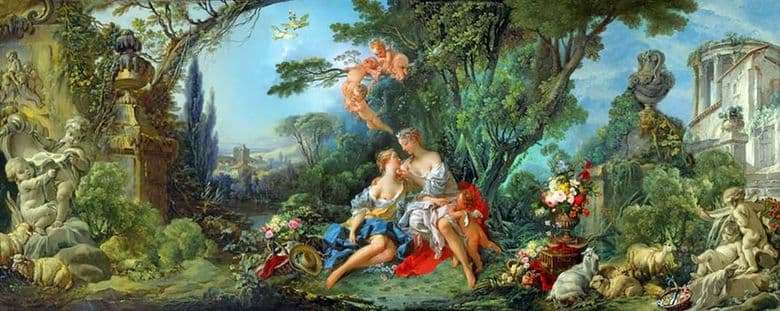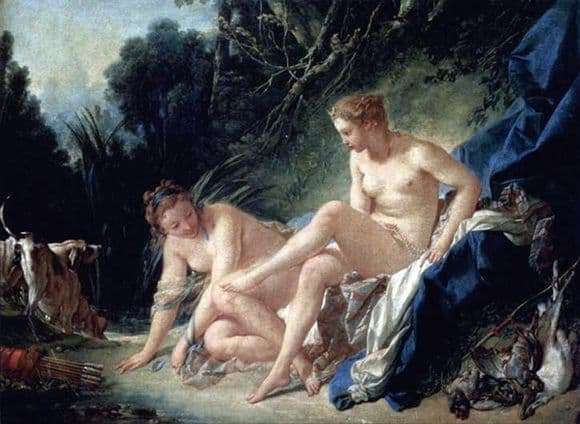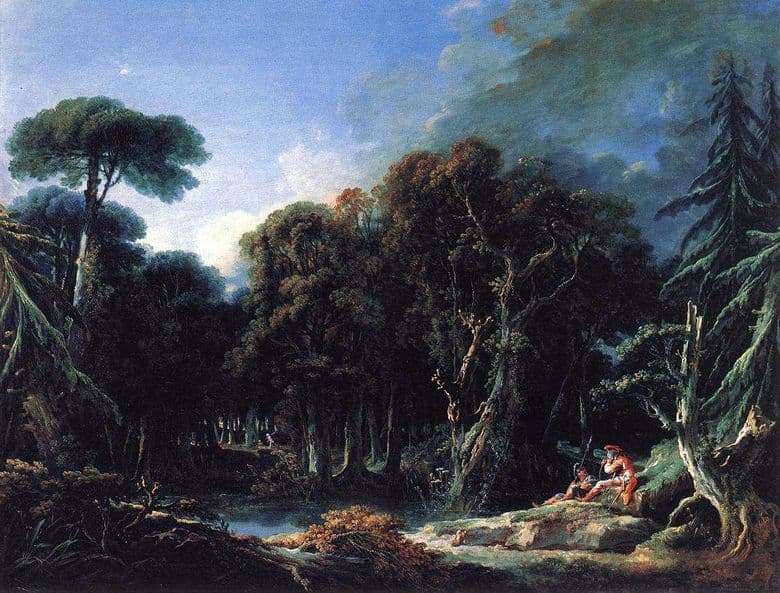
At the beginning of the eighteenth century in France, the most popular style in art was Rococo. For rococo is characterized by the image of luxury, satiety, the abundance of decorative elements, capricious forms. Pictures at that time served mainly as interior decoration. The characters were portrayed like porcelain figurines; at the same time, for bodies in pictures, lush, sensual forms are typical. The plots of paintings are often pastoral. The background is most often used scenic lawns, bordered by trees, bushes; river or stream are also required elements of the landscape.
Francois Boucher was the most prominent artist of the Rococo era. In addition to painting, he created sketches for painting porcelain and tapestries, was fond of sculpture, created prints, painted interiors. All his works are characterized by light pink, blue and pale green tones.
The plot of the picture is taken from the ancient Roman myth. According to legend, the god Jupiter was inflamed with a passion for the nymph Callisto, and in order not to scare her, appeared before the desired girl in the guise of the goddess Diana. In the female form, god tried to seduce Callisto. The nymph, being the companion of Diana, accompanied her on the hunt and was therefore not surprised at the appearance of the lady. So Jupiter managed to seduce the beloved, who vowed virginity. The myth was widely known to French society thanks to Ovid’s Metamorphoses.
Boucher portrayed two flirting girls on the background of a pastoral landscape; a group of cupids performs a decorative task, outwardly resembling a wreath or a flower garland. There is nothing divine or sublime in young heroines; most likely, the artist rather accurately conveyed the look of French models, posing for the work. It is believed that the beauty of these canvases can be appreciated only in the respective interiors, of which they were part.
Description of the painting by Francois Boucher “Jupiter and Callisto”







